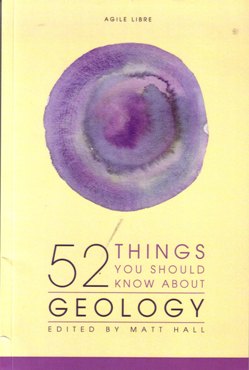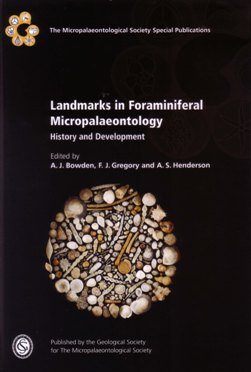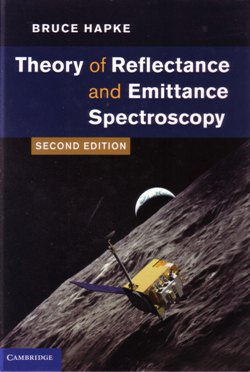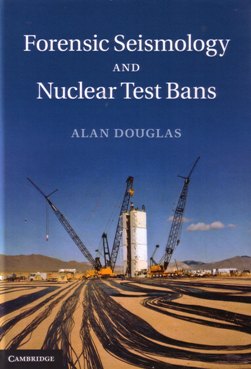 52 things you should know about geology
52 things you should know about geology
‘Advice to Young Explorationists’ would be the appropriate subtitle for this easily readable and entertaining volume. It is a collection of essays by geologists of all vintages and a wide range of disciplines, but predominantly with direct experience of working in oil and gas.
The aim is to provide recent geoscience graduates, and those in the early stages of their career in exploration and production, with the kind of mentoring that is missing from textbooks. Its publication closely follows that of 52 Things You Should Know About Geophysics (Hall and Bianco (eds) 2012); similar volumes on Rock Physics, Biostratigraphy, and Geocomputing are in preparation.
The author guidelines for the series boil down to the instruction ‘Write 600 words on something you are passionate about’. Each ‘thing’ occupies a two-page spread, on which some authors have included an illustration. (For authors whose verbosity got the better of them, one ‘thing’ has led to another, and they have been allowed two spreads, each separately titled).
The arbitrary arrangement of the essays alphabetically by title emphasises the aim of making this a book to dip into. A second contents list organises the titles into themes. There is also an index, and if these are not enough to help the reader locate a particular essay for rereading, the brief author bios at the end also include a link to the essay(s) written by each.
Essays range from the general – enthusiastic reminiscences of careers in the industry, for example – to those emphasising the importance of fieldwork (several of these), making maps, digging up old data, and not ignoring the basinal and wider regional setting of a prospect. H H Read’s dictum about ‘seeing the most rocks’ gets at least five mentions, but several authors offer cautionary remarks about the relationship between models and observations – there’s a little philosophy here among the practical tips and the nuggets of wisdom and experience.
So, don’t be misled by the ‘You’ in the title (seeing the book on the hall table, my wife mistakenly thought it might reveal the mystery of my professional obsession with rocks) because the intended readership is quite specific. If you’re right at the start of your career this volume will put you in touch with the human side of a geoscientist’s life in oil and gas, and will entertain as well as enlighten you. Anyone else may nevertheless enjoy the insights into the preoccupations, predilections and prejudices of the life of an exploration geologist.
Reviewed by David Smith
52 THINGS YOU SHOULD KNOW ABOUT GEOLOGY by MATT HALL (Ed.) Published by: Agile Libre, Nova Scotia, 2014, 130pp. ISBN 978-0-9879594-2-3 (pbk) RRP (UK) £12.00. W: www.agilelibre.com
 Landmarks in Foraminiferal Micropalaeontology
Landmarks in Foraminiferal Micropalaeontology
This is the sixth book in a series of publications. The following quote from the introduction illustrates the editors’ vision and offers an example of the writing style.
“The idea for this book came about from the realisation that micropalaeontology as a discipline had reached a watershed. The global closure of research schools worldwide and changing trends in science funding support meant that perhaps it was timely to step back and look at how the discipline had developed from a global perspective.”
Advances in chemical dating techniques, geophysical methods, and the like, mean for many they have become the preferred tools of analysis over those of micropalaeontology; particularly in drilling activities. Real-time data from down-hole equipment has eclipsed micropaleaontology, where a specialist is needed to interpret fossil data which is blurred as it travels to surface and is already historical by the time it reaches the microscope…
This is plainly an academic book for academics. I imagine particularly micropalaeontologists? Who else would have the grit to plod through it?
There is structure, but no real flow or narrative - which is a real shame and a lost opportunity. There are some genuinely interesting nuggets, but they have to be picked out from among the meticulously referenced text. I understand the importance of academic exactitude, but the title – although long winded – suggests a journey, a story: epic “Landmarks”. The landmarks are there to be sure, but any excitement or reader involvement is lost by dry presentation. Some academic writers manage to be informative, factual, referenced and readable. This, by contrast is no page-turner. Every gem has to be hewn with an axe.
Those with an interest in historical geology, the oil industry, the channel tunnel, war deprived determination and the like should all wish to read this book eagerly. Instead, it is as if the authors wish to tease and frustrate the reader. There are some great eccentrics in the early years, but by the time the dryness sets in it is hard to raise a smile.
In summary - it is a book to be recommended to those with the necessary dedication, patience and determination.
Reviewed by Martin Carruthers
LANDMARKS IN FORAMINIFERAL MICROPALAEONTOLGY – HISTORY AND DEVELOPMENT by: A J BOWDEN, F J GREGORY, AND A S HENDERSON 2013 Published for The Micropalaeontology Society, by The Geological Society of London ISBN 978-1-86239-371-4 360 pages. List price: £95.00 W: www.geolsoc.org.uk
 Theory of Reflectance and Emittance Spectroscopy
Theory of Reflectance and Emittance Spectroscopy
Reflectance spectroscopy is a technique of burgeoning application, from the investigation of pigments on ancient works of art to terrestrial (and beyond) remote sensing surveys. It is the only technique available for the investigation of the surfaces of the numerous rocky bodies (large and small) that comprise the rest of our Solar System and, given the professional provenance of the author, pre-eminent in his field, it is this application that features most prominently here.
The first edition, published in 1993, is regarded by many as the seminal text on the subject. This second edition is significantly different in parts and includes a consideration of much of the relevant literature published after the first appeared.
The new work is logically structured in four sections, with essential foundation material such as Maxwell’s Equations and blackbody emission treated briefly but adequately. The geological user will be most interested in the latter chapters, with Chapters 14 and 15 probably regarded as essential reading for almost all users of reflectance spectroscopy. There are appendices covering vector calculus, complex variables and Fraunhofer diffraction, together with an invaluable table of symbols as used in the text.
As always, the clue to the content is in the title. Though there are some titbits of information sprinkled throughout the text, do not expect much description or discussion of instrumentation, calibration and data processing – the interested reader must look elsewhere. However, the dense mathematical treatment of theory is enlivened by pertinent and informative discussion and the occasional personal anecdote. That said, the author takes no prisoners - this book works the reader hard.
Hapke’s admonition (on page four) to ‘… always derive a critical equation…’ need not be taken too seriously by most users, who will certainly rely on their favourite software package (some of which being briefly mentioned at places in the text). Many users of reflectance spectroscopy, happy with the assumption of ‘perfect’ diffuse reflectance, will not require the depth of theory presented here, but similarly few will not have occasion to delve into it for some enlightenment at times.
This is probably not a book for most personal bookshelves (though I shall be pleased to have it readily to hand); but it is certainly one for the institutional library.
Reviewed by Trevor F Emmett
THEORY OF REFLECTANCE AND EMITTANCE SPECTROSCOPY (SECOND EDITION) by HAPKE, B. 2012. Published by: Cambridge Univeristy Press, The Edinburgh Building, Cambridge, CB2 8RU, UK. 254 x 180 mm, 528 pp. ISBN 978-0-521-88349-8 (HBK). List price £58. W: www.cambridge.org
 Forensic Seismology and Nuclear Test Bans
Forensic Seismology and Nuclear Test Bans
Forensic seismology is the application of seismology to nuclear test ban verification – to answer the question: ‘Is the detected seismic activity earthquake- or explosion-generated?’. This volume documents the 50-year development of the discipline of forensic seismology and the associated methods of seismic data analysis.
Presented in 10 chapters (and 14 appendices, including exercises in seismic data analysis with solutions online), the volume extensively covers the major topics of seismic magnitude estimation, travel-time paths and epicentres; seismic signal processing and the use of seismometer arrays. Each chapter is appropriately illustrated with figures and data-tables, and seismograms from explosions and earthquakes, demonstrating the methods (and associated problems) of their visual analysis and interpretation. The exercises linked to each chapter allow the reader to engage with the key concepts covered and apply the analytical techniques introduced to particular problems.
As a leading UK researcher in the field for over 35 years, the author has produced a robust account of the development of the field predominantly based upon the results of the UK research programme and the interaction of this with the complementary programme developed in the USA. I found the sections describing the historical context of the development of this relatively ‘new’ discipline of particular interest, with the associated geopolitical imperatives driving the progress of the science concisely explained and outlined.
By necessity, the volume incorporates a significant mathematical component that some general (or non-quantitatively minded) readers may initially find off-putting. However, the mathematical basis underpinning each of the key concepts is clearly provided as they are introduced. This allows the reader a full and appropriate understanding and appreciation of the geophysical data and models presented, and the way they have been applied to forensic seismology.
As a key reference volume, I anticipate that its primary audience will be practising academic researchers and allied specialists within the field (and the geophysics of Earth structure in general), but will also prove valuable to advanced undergraduate geoscience students and postgraduate researchers in seismology and solid Earth geophysics.
Reviewed by Mark Griffin
FORENSIC SEISMOLOGY AND NUCLEAR TEST BANS by ALAN DOUGLAS. Published by: Cambridge University Press. 2013. ISBN 978-1-107-03394-8. hbk 514pp. List Price: £80.00 W: www.cambridge.org